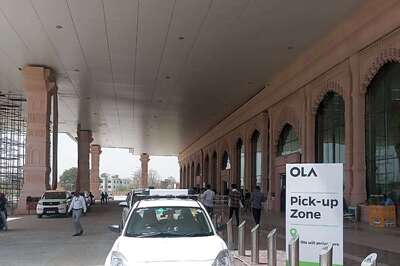
views
Eighteen Army personnel sustained injuries during the violent clash with Chinese troops in Galwan Valley on Monday night and they are undergoing treatment at a military hospital, people familiar with the matter said.
Out of 18, four personnel were critically injured but they are responding to treatment and are stable now, they said.
Twenty Indian Army personnel including a Colonel were killed in the fierce clash in Galwan. The Chinese side also suffered casualties. China has not yet talked about the number of casualties suffered by the People's Liberation Army.
However, government sources, citing a US intelligence report, said Chinese Army suffered 35 casualties during the clash, adding it could be a combination of total number of soldiers killed and injured.
The clash in Galwan Valley on Monday night is the biggest confrontation between the two militaries after their 1967 clashes in Nathu La in 1967 when India lost around 80 soldiers while over 300 Chinese army personnel were killed in the confrontation.
People said another 58 personnel who sustained minor injuries have also been kept under supervision, adding they will be ready for joining their units in two weeks.
The two armies were engaged in a standoff in Galwan and several other areas of the eastern Ladakh since May 5 when the two sides clashed on the bank of the Pangong Tso.
After the standoff began, the Indian military leadership decided that Indian troops will adopt a firm approach in dealing with the aggressive posturing by the Chinese troops in all disputed areas of Pangong Tso, Galwan Valley, Demchok and Daulat Beg Oldie.
The Chinese Army has been gradually ramping up its strategic reserves in its rear bases near the LAC by rushing in artillery guns, infantry combat vehicles and heavy military equipment.
The trigger for the face-off was China's stiff opposition to India laying a key road in the Finger area around the Pangong Tso Lake besides construction of another road connecting the Darbuk-Shayok-Daulat Beg Oldie road in Galwan Valley.
The road in the Finger area in Pangong Tso is considered crucial for India to carry out patrols. India has already decided not to stall any border infrastructure projects in eastern Ladakh in view of Chinese protests.
The situation in the area deteriorated after around 250 Chinese and Indian soldiers were engaged in a violent face-off on May 5 and 6. The incident in Pangong Tso was followed by a similar incident in north Sikkim on May 9.
The India-China border dispute covers the 3,488-km-long LAC. China claims Arunachal Pradesh as part of southern Tibet, while India contests it.
Prior to the clashes, both sides have been asserting that pending the final resolution of the boundary issue, it is necessary to maintain peace and tranquillity in the border areas.



















Comments
0 comment